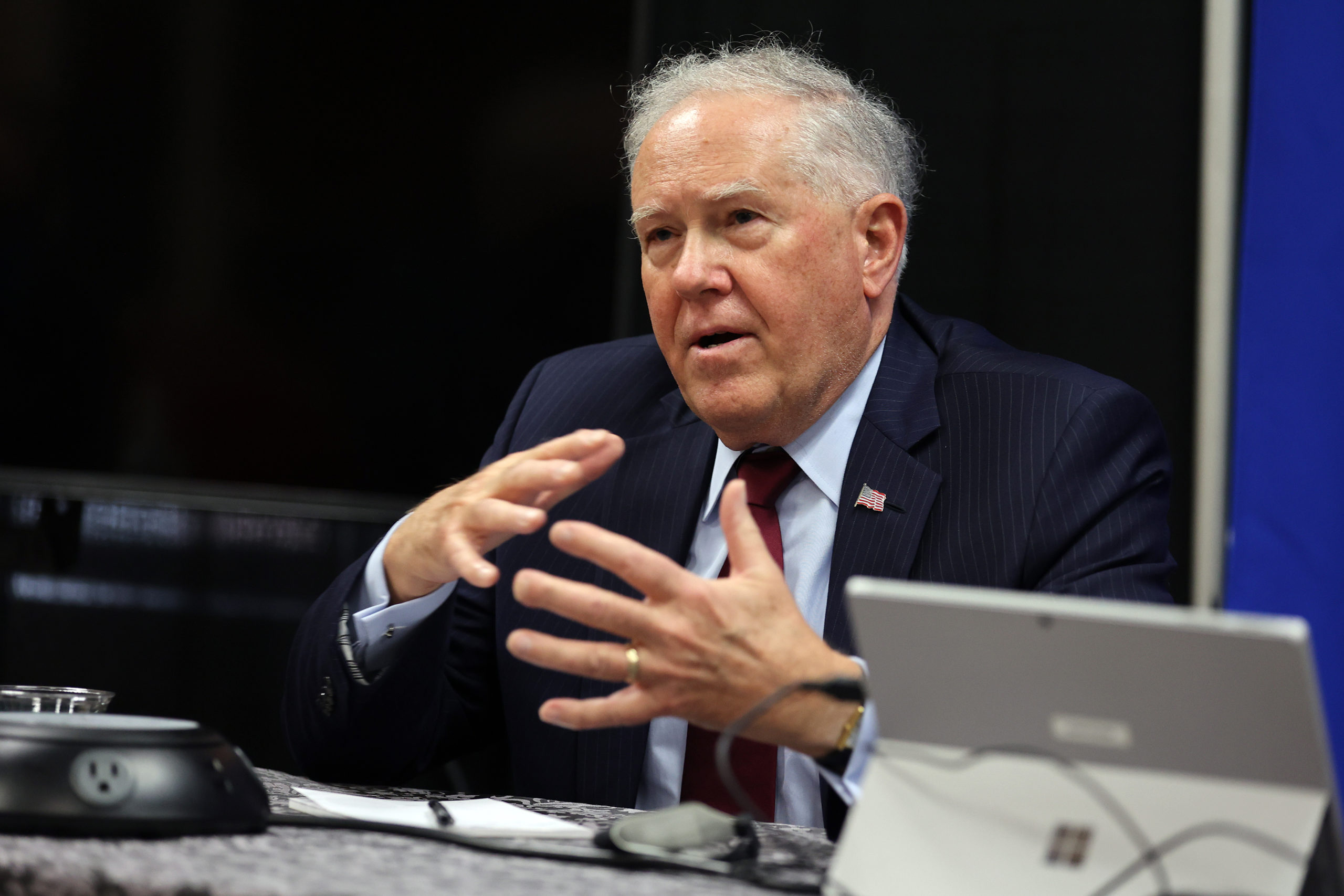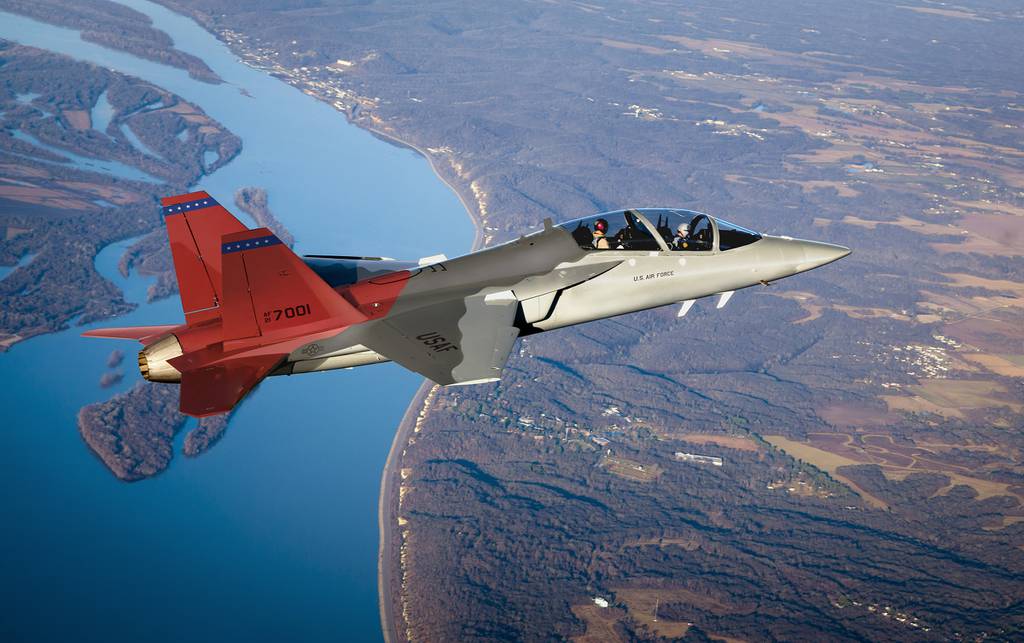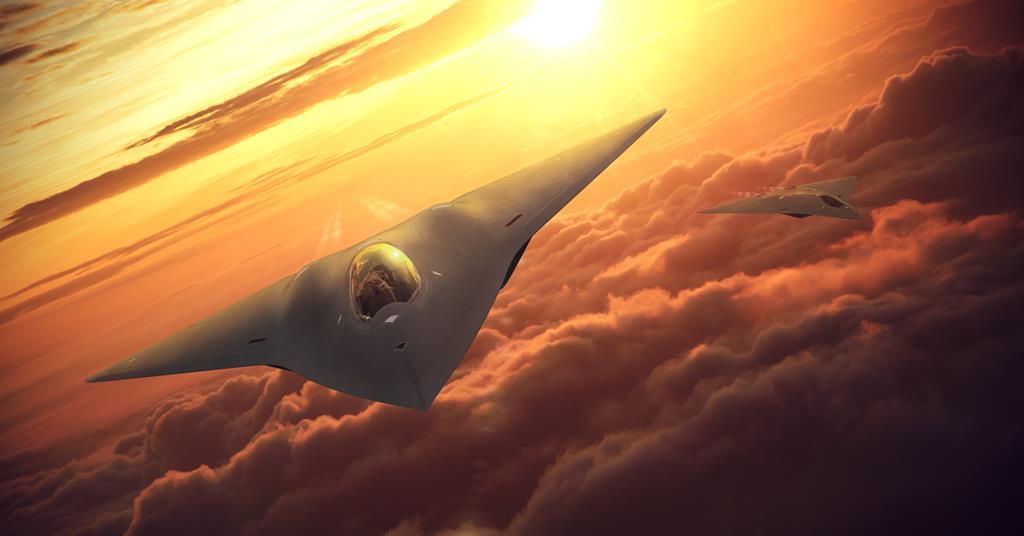pedrospe
ACCESS: Secret
- Joined
- 9 February 2010
- Messages
- 364
- Reaction score
- 136
the pilot's visibility all round is pretty good.
the pilot's visibility all round is pretty good.
There are some folks at GE, P&W, RR, USAF, and AFRL that would certainly argue with you.sensors, missiles, DEW defense, UCRAV mothership, buildability, maintainability, cost efectiveness are the mainshows now, not stealth, which is increasingly countered and at longer ranges.Not that myth again, please.canards, clearly stealth isn't a consideration /s
Personnally for canards.
PS: NGAD's engine development still appears to be diminishing returns not worth the investment. hopefully a revolution in the classifed world, otherwise it is industrial Welfare.
Better send an urgent message to the Northrop Grumman commercial art departmentThe cockpit glass looks outdated. Visibility outside is bad. Looks more like high speed, high altitude stealth ISR platform. Let’s say Mach 2,5 without after burning. That’s why inlets are above.
But a dog gone good cartoon, and they managed to put it all in an elevator! Kudos to the art departmentit's nothing more than cartoon
Why, w/near term advanced materials, should fatigue be an issue at all? IMOCircling back to the digital century series discussion for a sec…
I’ve been under the impression that the argument for it operates in two parts, and I’m wondering if others agree in their interpretation or not.
As I hear it, the main argument is that if you look at the life cycle costs of your generic fighter aircraft program, MRO and upgrades are more expensive than R&D and acquisition. And, this goes double (or some other financially painful multiplier) for stealth, as well as for aircraft late in their fatigue lifetimes.
Mechanically less robust!?Therefore, according to this argument, we are irrational in our tendency to try to buy future-proofed, long-fatigue-life airplanes that push the state of the art rather than embody it. Instead, we should cut back on sustainment costs by building mechanically less robust airframes with off-the-shelf avionic systems (though we should evolve what off-the-shelf means in a steady, independent way).
An F-16 replacement as a little cheaper, but, "ages out of svc" no.A new generation of cheaper, shorter lifetime systems can provide equal capability for less cost, or greater fleet size for equal cost, and then when it ages quickly out of service, it can be replaced by new tails that do the same.
This 'every 5 yrs a new plane' was never a good idea, but as you disagree w/ DEW tech will drive an upgradeable concept.And so we just buy more tails per decade, while retiring more tails per decade. 10 year airplanes rather than 30 year, say.
And then the second part of the argument comes in as an independent premise: that digital engineering tech has more or less advanced to the point where projects can go from RFP to squadron service in approximately the fatigue lifetime stated above.
Since cleansheet designs can appear so rapidly, tail churn can be equivalent to type replacement, resulting in a new jet type each decade, or mutatis mutandis for fleets with multiple types at any given time. If you had a future fighter force of two types at any time, for example, you could have a new type entering every five years if you staggered things.
See above DEW will drive.To me it all seems worrisome…with platform characteristics taking center stage and practicalities of testing, validation, maintenance, pilot familiarization, tactics development, and the like being potentially shortchanged. IMO, the fighter fleet needs range and maybe a second crewmember for battle management, but after that I don’t think platform design will win wars, unless maybe laser needs dictate constantly evolving platforms, which I doubt. Would love to hear other opinions though.
Now drop in politicians who change their minds every four years and it's a miracle anything gets accomplished at all.DOD procurement will never be efficient, no matter how much the bean counters and policy makers want to try. That's just the nature of the beast. What we wanted yesterday will be different than what we want today, which will be different than what we'll want tomorrow. Compound that over the potential lifespan of any DOD project and you'll understand why costs can never be successfully reigned in.


Kendall’s Top Seven Priorities to Cope With Peer Adversaries Include Two New Aircraft | Air & Space Forces Magazine
Air Force Secretary Frank Kendall's top seven priorities include two new programs of record, he said Dec. 9.www.airforcemag.com

Kendall’s Top Seven Priorities to Cope With Peer Adversaries Include Two New Aircraft | Air & Space Forces Magazine
Air Force Secretary Frank Kendall's top seven priorities include two new programs of record, he said Dec. 9.www.airforcemag.com
A New Unmanned Fighter
“Basically, the idea here is that you have, … nominally, up to five” unmanned aircraft escorting a single F-22, F-35, or the fighter platform element of the Next-Generation Air Dominance system. The pilots of these aircraft are “essentially, calling ‘plays,’ and … using those other unmanned combat aircraft … as a formation to do things that make sense, tactically.”
Back too the digital quarterback ala Commanche. Apache could take such a role for a returned UCRotorAV. ALE has a bit to be desired. a bit low in capability. ALE on UCRotorAV maybe.

Kendall’s Top Seven Priorities to Cope With Peer Adversaries Include Two New Aircraft | Air & Space Forces Magazine
Air Force Secretary Frank Kendall's top seven priorities include two new programs of record, he said Dec. 9.www.airforcemag.com
Yes yes. I think we can now burry the debate b/w those who thought it had already flown or not.
Nah, that term's reserved for when Skynet/Genesis takes over.It makes me wonder if USAF pilots are going to start referring to the rest of their squadron mates as "disloyal wingmen".
Yes yes. I think we can now burry the debate b/w those who thought it had already flown or not.
Indeed ... the only question that so remains is: When will we get a first glimpse of it?
Yes yes. I think we can now burry the debate b/w those who thought it had already flown or not.
Indeed ... the only question that so remains is: When will we get a first glimpse of it?
And/or a glimpse of the one(s) who did not proceed beyond the technology demonstrator phase.
Imagine the scene in top gun at the bar and the R2-D2 shows up and steals your girl?It makes me wonder if USAF pilots are going to start referring to the rest of their squadron mates as "disloyal wingmen".
Yes yes. I think we can now burry the debate b/w those who thought it had already flown or not.
Indeed ... the only question that so remains is: When will we get a first glimpse of it?
And/or a glimpse of the one(s) who did not proceed beyond the technology demonstrator phase.
There will likely be (or planned) multiple demonstrators. Frank Kendall had originally mentioned "Demonstrators" when he revealed the AII back in 2015 ish. He brought that up again this week. If the entire digital push is to be taken at face value than its pretty safe to assume that multiple demonstrators (some full scale, some test bed) may be in the works or already flying.
View: https://www.youtube.com/watch?v=uDxz01GmO34
The only X-plane that would fit would be the X-62A, which is the old NF-16D VISTA converted with the System for Autonomous Control of Simulation (SACS) as part of the Skyborg programme, which would tie-in nicely with the Loyal Wingman efforts."what we told people publicly was that it was a program that built some X-planes, technology demonstrators ..."
"that program has moved forward very well"
"it is a feeder to both the NGAD 'platform', if you will, and the NGAD family of systems."
They haven't revealed them. For all we know they're the XF-26 and XF-27 or XF-126 and XF-127. They may even just be going "Program Name" Vehicle 1 and "Program Name" Vehicle 2. He's most likely just using the term "X-Plane" in the sense that they were experimental demonstrators, not necessarily receiving an X designation. Having said that, does that mean we're at the YF stage of the program? That's a question for him which I don't think he'll answer.The only X-plane that would fit would be the X-62A, which is the old NF-16D VISTA converted with the System for Autonomous Control of Simulation (SACS) as part of the Skyborg programme, which would tie-in nicely with the Loyal Wingman efforts."what we told people publicly was that it was a program that built some X-planes, technology demonstrators ..."
"that program has moved forward very well"
"it is a feeder to both the NGAD 'platform', if you will, and the NGAD family of systems."
The only X-plane that would fit would be the X-62A, which is the old NF-16D VISTA converted with the System for Autonomous Control of Simulation (SACS) as part of the Skyborg programme, which would tie-in nicely with the Loyal Wingman efforts."what we told people publicly was that it was a program that built some X-planes, technology demonstrators ..."
"that program has moved forward very well"
"it is a feeder to both the NGAD 'platform', if you will, and the NGAD family of systems."
They haven't revealed them. For all we know they're the XF-26 and XF-27 or XF-126 and XF-127. They may even just be going "Program Name" Vehicle 1 and "Program Name" Vehicle 2. He's most likely just using the term "X-Plane" in the sense that they were experimental demonstrators, not necessarily receiving an X designation. Having said that, does that mean we're at the YF stage of the program? That's a question for him which I don't think he'll answer.The only X-plane that would fit would be the X-62A, which is the old NF-16D VISTA converted with the System for Autonomous Control of Simulation (SACS) as part of the Skyborg programme, which would tie-in nicely with the Loyal Wingman efforts."what we told people publicly was that it was a program that built some X-planes, technology demonstrators ..."
"that program has moved forward very well"
"it is a feeder to both the NGAD 'platform', if you will, and the NGAD family of systems."
But now, Boeing sees a highly digital future for aircraft design and production unfolding here, with the T-7 paving the way. And manufacturing lessons learned from the T-7 have already helped in the creation of the Air Force’s new F-15EXs and the secretive Next Generation Air Dominance fighter, said Matt Giese, Boeing’s chief test pilot for the F-15EX.

The YF-22 and YF-23 were the very definition of prototypes. In fact, that's what the Y stands for; I never said anything about EMD.ATF´s YF-22 and YF-23 flew in 1990 and they were not EMD prototypes. They were 'feeders' to the EMD F-22A prototype...
The YF-22 and YF-23 were the very definition of prototypes. In fact, that's what the Y stands for; I never said anything about EMD.
It could meen that Boeing could be the builder of Ngad Demonstrator ?But now, Boeing sees a highly digital future for aircraft design and production unfolding here, with the T-7 paving the way. And manufacturing lessons learned from the T-7 have already helped in the creation of the Air Force’s new F-15EXs and the secretive Next Generation Air Dominance fighter, said Matt Giese, Boeing’s chief test pilot for the F-15EX.
The T-7 takes shape: Inside the factory where the Air Force’s next trainer is being built
Boeing says its high-tech methods to design and build the T-7A Red Hawk are saving time, simplifying processes, improving quality and cutting down on defects.www.defensenews.com
No. More like a subsupplier like on the f22. I suspect no matter who wins, Boeing wins.It could meen that Boeing could be the builder of Ngad Demonstrator ?But now, Boeing sees a highly digital future for aircraft design and production unfolding here, with the T-7 paving the way. And manufacturing lessons learned from the T-7 have already helped in the creation of the Air Force’s new F-15EXs and the secretive Next Generation Air Dominance fighter, said Matt Giese, Boeing’s chief test pilot for the F-15EX.
The T-7 takes shape: Inside the factory where the Air Force’s next trainer is being built
Boeing says its high-tech methods to design and build the T-7A Red Hawk are saving time, simplifying processes, improving quality and cutting down on defects.www.defensenews.com
No. More like a subsupplier like on the f22It could meen that Boeing could be the builder of Ngad Demonstrator ?But now, Boeing sees a highly digital future for aircraft design and production unfolding here, with the T-7 paving the way. And manufacturing lessons learned from the T-7 have already helped in the creation of the Air Force’s new F-15EXs and the secretive Next Generation Air Dominance fighter, said Matt Giese, Boeing’s chief test pilot for the F-15EX.
The T-7 takes shape: Inside the factory where the Air Force’s next trainer is being built
Boeing says its high-tech methods to design and build the T-7A Red Hawk are saving time, simplifying processes, improving quality and cutting down on defects.www.defensenews.com
Not really. They were a blend of X plane and prototype. If they were true prototypes then the yf22 would have carried more then 4 aams.... The yf23 didn't even carry one. The 22 was far more production intent as is obvious.The YF-22 and YF-23 were the very definition of prototypes. In fact, that's what the Y stands for; I never said anything about EMD.ATF´s YF-22 and YF-23 flew in 1990 and they were not EMD prototypes. They were 'feeders' to the EMD F-22A prototype...
It could meen that Boeing could be the builder of Ngad Demonstrator ?

fighter will have to be able to repeatedly find enemy aircraft and fire quickly – again and again.
US Air Force to advance stealthy successor for F-22
Details of the US Air Force's Next-Generation Air Dominance fighter are top secret, but some hints about its key technologies are beginning to appear.www.flightglobal.com
